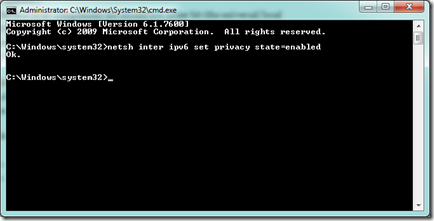Super User Question of the Week [7 February 2011 – 14 February 2011]
With the roll out of IPv6 and IPv4 addresses quickly running out, there will be soon a greater migration over to IPv6. But there seems to be an issue, your computer’s MAC address may be included with the new IPv6 address. In comes Arjan’s great question:
How to avoid exposing my MAC address when using IPv6?
On my Macs, each IPv6 address includes the MAC address of a specific computer (not of my router). Sites such as ipv6-test.com not only show it, but even tell me it belongs to an Apple computer.
This feels like a super cookie, and might apply to other operating systems as well. How can I avoid my MAC addresses from being exposed?
Grawity gives us an amazing answer. But before I get into that we really need to focus and congratulate him. As Arjan comments in the meta post for this weeks Question of the week:
The key is:
Grawity answered my question before I asked it. Even more: before I knew I had that question!
The full story:
I’d always assumed that I could not stop exposing my MAC address in my IPv6 addresses, as I did not find any settings for that in my router. Kudos for the commenting system, as enters grawity on one of my answers.
So kudos to you @Grawity! It’s your answer that’s really being featured today.
Here’s how your IPv6 address may include your MAC address. An example IPv6 address is something like this:
2001:0db8:1:2:60:8ff:fe52:f9d8
-
Take the last 64 bits (the host identifier) and add lead zeroes: 00:08ff:fe52:f9d8
-
Strip “ff:fe” from the middle. (If these bytes are not there, then there’s no MAC address.)
-
For the first byte: complement the second low-order bit (the universal/local bit; if ther bit is a 1, make it 0, and if it is a 0, make it 1) So: 0x00 (00000000) become 0x02 (00000010)
-
“60:8ff:fe52:f9d8” now becomes “02:60:08:52:f9:d8”!
Privacy addressing is used to hide you MAC address from IPv6. What Privacy addressing does is generate a random, temporary address that doesn’t contain your MAC address. Here’s how you enable Privacy addressing:
-
Windows (starting with XP SP2) – This is enabled by default in XP, VISTA, and 7
-
Open a command window as an administrator.
-
-
Linux:
-
To enable temporary addresses and make them preferred for outgoing connections:
-
Open a terminal and run this as sudo: ”sysctl net.ipv6.conf.eth0.use_tempaddr”

-
-
Each of the commands above can be changed for a single interface:
-
“net.ipv6.conf.eth0.use_tempaddr”

-
-
Filed under Question of the Week


Subscribe to comments with RSS.
Comments have been closed for this post